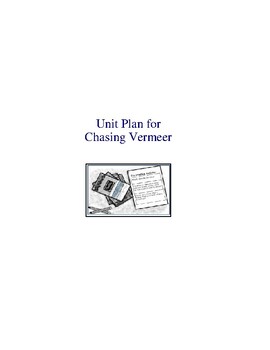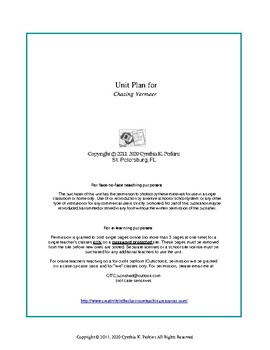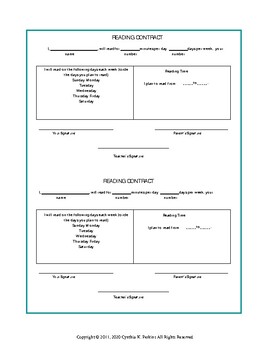Chasing Vermeer Complete Literature and Grammar Unit
- PDF
- Easel Activity
Description
If you prefer to have novel studies for ANY novel, please see the following:
Activities for Any Novel Volume 1 (34 pages)
Activities for Any Novel Volume 2 (33 pages)
Activities for Any Novel Volume 3 (37 Pages)
Novel Study for Any Book (139 pages)
Novel Study and Activities for Any Book BUNDLE (239 pages)
This is a combined unit that contains everything you need to teach the novel and more! Included in the unit are pre-reading, active-reading and post-reading activities with grammar lessons, literary activities, a literary terms and elements matching quiz, a final essay test with grading rubric, and other activities just for fun!
*This unit also includes a link to $70 worth of free instructional PowerPoint Presentations created by me to use along with the grammar activities in the unit!
Types of activities included in our units:
Literature Circle Roles
Active Reading Chapter Notes
Pre-reading, active reading, and post reading activities
Character Activities
Creative Activities
Climax and Rising and Falling Action
Author Study
Subjects and Predicates
Point of View
Main Idea and Details
Quotations
Paraphrasing
Antagonist and Protagonist
Mood
Predictions
Narrative and Dialogue
Writing Chapter Summaries
Character Activities
Thought Questions
Parts of Speech:
• Nouns
• Adjectives
• Verbs
• Pronouns
• Prepositional Phrases
Final Essay Test
Rubric for Final Essay Test
Matching Quiz on Literary Terms and Elements of a Story
Answers to Matching Quiz on Literary Terms and Elements of a StoryAnswers for Grammar Activities
Middle School Novel and Grammar Units is committed to providing you with quality resources for your classroom, specializing in quality literature, grammar, spelling, and punctuation lessons for grades 4 to 8.
Do not see the unit you need? Email me at perki_teacher4ever@msn.com . I am constantly looking for newideas for what to create next and would be pleased to hear from you.
Great effort has been made to be sure that my units are free of error. However, if you do happen to find any inaccuracies, please email me so I can correct the error and give you an opportunity to redownload the product.
Common Core Standards:
CCSS.ELA-Literacy.RL.4.1 Refer to details and examples in a text when explaining what the text says explicitly and when drawing inferences from the text.
CCSS.ELA-Literacy.RL.4.2 Determine a theme of a story, drama, or poem from details in the text; summarize the text
CCSS.ELA-Literacy.RL.4.3 Describe in depth a character, setting, or event in a story or drama, drawing on specific details in the text (e.g., a character’s thoughts, words, or actions).
CCSS.ELA-Literacy.RF.4.4a Read grade-level text with purpose and understanding
CCSS.ELA-Literacy.RF.4.4c Use context to confirm or self-correct word recognition and understanding, rereading as necessary
CCSS.ELA-Literacy.W.4.1b Provide reasons that are supported by facts and details
CCSS.ELA-Literacy.L.4.4a Use context (e.g., definitions, examples, or restatements in text) as a clue to the meaning of a word or phrase.
CCSS.ELA-Literacy.L.4.4c Consult reference materials (e.g., dictionaries, glossaries, thesauruses), both print and digital, to find the pronunciation and determine or clarify the precise meaning of key words and phrases
CCSS.ELA-Literacy.L.4.5 Demonstrate understanding of figurative language, word relationships, and nuances in word meanings.
CCSS.ELA-Literacy.CCRA.R.1 Read closely to determine what the text says explicitly and to make logical inferences from it; cite specific textual evidence when writing or speaking to support conclusions drawn from the text
CCSS.ELA-Literacy.L.5.5 Demonstrate understanding of figurative language, word relationships, and nuances in word meanings.
CCSS.ELA-Literacy.L.5.5a Interpret figurative language, including similes and metaphors, in context
CCSS.ELA-Literacy.L.5.5b Recognize and explain the meaning of common idioms, adages, and proverbs.
CCSS.ELA-Literacy.L.5.5c Use the relationship between particular words (e.g., synonyms, antonyms, homographs) to better understand each of the words.
CCSS.ELA-Literacy.L.5.4a Use context (e.g., cause/effect relationships and comparisons in text) as a clue to the meaning of a word or phrase
CCSS.ELA-Literacy.L.5.4c Consult reference materials (e.g., dictionaries, glossaries, thesauruses), both print and digital, to find the pronunciation and determine or clarify the precise meaning of key words and phrases
CCSS.ELA-Literacy.W.5.1b Provide logically ordered reasons that are supported by facts and details.
CCSS.ELA-Literacy.RF.5.4a Read grade-level text with purpose and understanding.
CCSS.ELA-Literacy.RF.5.4c Use context to confirm or self-correct word recognition and understanding, rereading as necessary
CCSS.ELA-Literacy.RL.5.2 Determine a theme of a story, drama, or poem from details in the text, including how characters in a story or drama respond to challenges or how the speaker in a poem reflects upon a topic; summarize the text.
CCSS.ELA-Literacy.RL.5.3 Compare and contrast two or more characters, settings, or events in a story or drama, drawing on specific details in the text (e.g., how characters interact).
CCSS.ELA-Literacy.RL.5.4 Determine the meaning of words and phrases as they are used in a text, including figurative language such as metaphors and similes.
CCSS.ELA-Literacy.RL.5.6 Describe how a narrator’s or speaker’s point of view influences how events are described.
CCSS.ELA-Literacy.RL.6.1 Cite textual evidence to support analysis of what the text says explicitly as well as inferences drawn from the text
CCSS.ELA-Literacy.RL.6.2 Determine a theme or central idea of a text and how it is conveyed through particular details; provide a summary of the text distinct from personal opinions or judgments
CCSS.ELA-Literacy.RL.6.4 Determine the meaning of words and phrases as they are used in a text, including figurative and connotative meanings; analyze the impact of a specific word choice on meaning and tone
CCSS.ELA-Literacy.W.6.1b Support claim(s) with clear reasons and relevant evidence, using credible sources and demonstrating an understanding of the topic or text.
CCSS.ELA-Literacy.L.6.4a Use context (e.g., the overall meaning of a sentence or paragraph; a word’s position or function in a sentence) as a clue to the meaning of a word or phrase
CCSS.ELA-Literacy.L.6.4c Consult reference materials (e.g., dictionaries, glossaries, thesauruses), both print and digital, to find the pronunciation of a word or determine or clarify its precise meaning or its part of speech
CCSS.ELA-Literacy.L.6.5 Demonstrate understanding of figurative language, word relationships, and nuances in word meanings.
CCSS.ELA-Literacy.L.6.5a Interpret figures of speech (e.g., personification) in context.
CCSS.ELA-Literacy.RL.7.1 Cite several pieces of textual evidence to support analysis of what the text says explicitly as well as inferences drawn from the text
CCSS.ELA-Literacy.RL.7.2 Determine a theme or central idea of a text and analyze its development over the course of the text; provide an objective summary of the text.
CCSS.ELA-Literacy.RL.7.4 Determine the meaning of words and phrases as they are used in a text, including figurative and connotative meanings; analyze the impact of rhymes and other repetitions of sounds (e.g., alliteration) on a specific verse or stanza of a poem or section of a story or drama.
CCSS.ELA-Literacy.W.6.1b Support claim(s) with clear reasons and relevant evidence, using credible sources and demonstrating an understanding of the topic or text.
CCSS.ELA-Literacy.L.7.4a Use context (e.g., the overall meaning of a sentence or paragraph; a word’s position or function in a sentence) as a clue to the meaning of a word or phrase.
CCSS.ELA-Literacy.L.7.4c Consult general and specialized reference materials (e.g., dictionaries, glossaries, thesauruses), both print and digital, to find the pronunciation of a word or determine or clarify its precise meaning or its part of speech
CCSS.ELA-Literacy.L.7.5 Demonstrate understanding of figurative language, word relationships, and nuances in word meanings
CCSS.ELA-Literacy.L.7.5b Use the relationship between particular words (e.g., synonym/antonym, analogy) to better understand each of the words.
CCSS.ELA-Literacy.RL.8.1 Cite the textual evidence that most strongly supports an analysis of what the text says explicitly as well as inferences drawn from the text
CCSS.ELA-Literacy.RL.8.4 Determine the meaning of words and phrases as they are used in a text, including figurative and connotative meanings; analyze the impact of specific word choices on meaning and tone, including analogies or allusions to other texts
CCSS.ELA-Literacy.L.8.4a Use context (e.g., the overall meaning of a sentence or paragraph; a word’s position or function in a sentence) as a clue to the meaning of a word or phrase
CCSS.ELA-Literacy.L.8.4d Verify the preliminary determination of the meaning of a word or phrase (e.g., by checking the inferred meaning in context or in a dictionary).
CCSS.ELA-Literacy.L.8.4c Consult general and specialized reference materials (e.g., dictionaries, glossaries, thesauruses), both print and digital, to find the pronunciation of a word or determine or clarify its precise meaning or its part of speech.
CCSS.ELA-Literacy.L.8.5 Demonstrate understanding of figurative language, word relationships, and nuances in word meanings
CCSS.ELA-Literacy.L.8.5b Use the relationship between particular words to better understand each of the words






